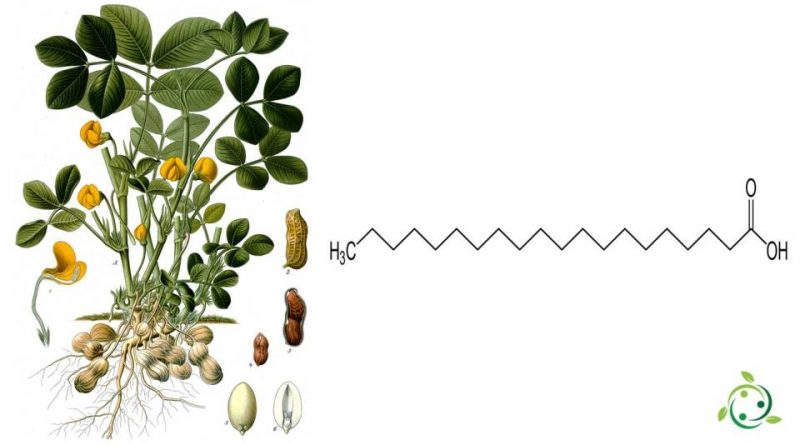Arachic acid
Arachic acid
Arachic acid, whose term in the official IUPAC nomenclature is: icosanoic acid is also known by the names of eicosanoic acid or arachidic acid.
Arachic acid has a brute or molecular formula: C20H40O2 and is a saturated fatty acid, with a linear chain of 20 carbon atoms, present in many vegetable and animal fats.
Physically, at room temperature, it is solid, white, insoluble in water but soluble in benzene, chloroform, diethyl ether and petroleum ether.
The name of arachic acid is due to the fact that it has been isolated in nature in the peanut (Arachis hypogaea L., 1753). Synthetically it can be formed by hydrogenation of arachidonic acid.
Arachic acid is found esterified with glycerol in various edible oils, usually at low concentrations; for example: peanut oil (~ 1.4%), cocoa butter (~ 1%), soybean oil (~ 0.5%), sunflower oil (~ 0.5%) and rapeseed oil, so as in cottonseed and linseed oil.
Furthermore, arachic acid is found in the seed oils of some plant species even at much higher concentrations, for example: Ongokea gore (~ 45%) or in seeds of different species of Nephelium (~ 35%) and Sapindus (~ 30%) ) but also in coconut (Cocos nucifera, insoluble in water) and in mango and pomegranate about 3%, in watermelon (Citrullus lanatus) about 4%, and in lime (Citrus aurantiifolia) about 6%. It is also found in milk fat, animal fat and breast milk.
In industry, arachic acid is used for the production of detergents, photographic materials and lubricants.
Warning: The information shown is not medical advice and may not be accurate. The contents are for illustrative purposes only and do not replace medical advice.

